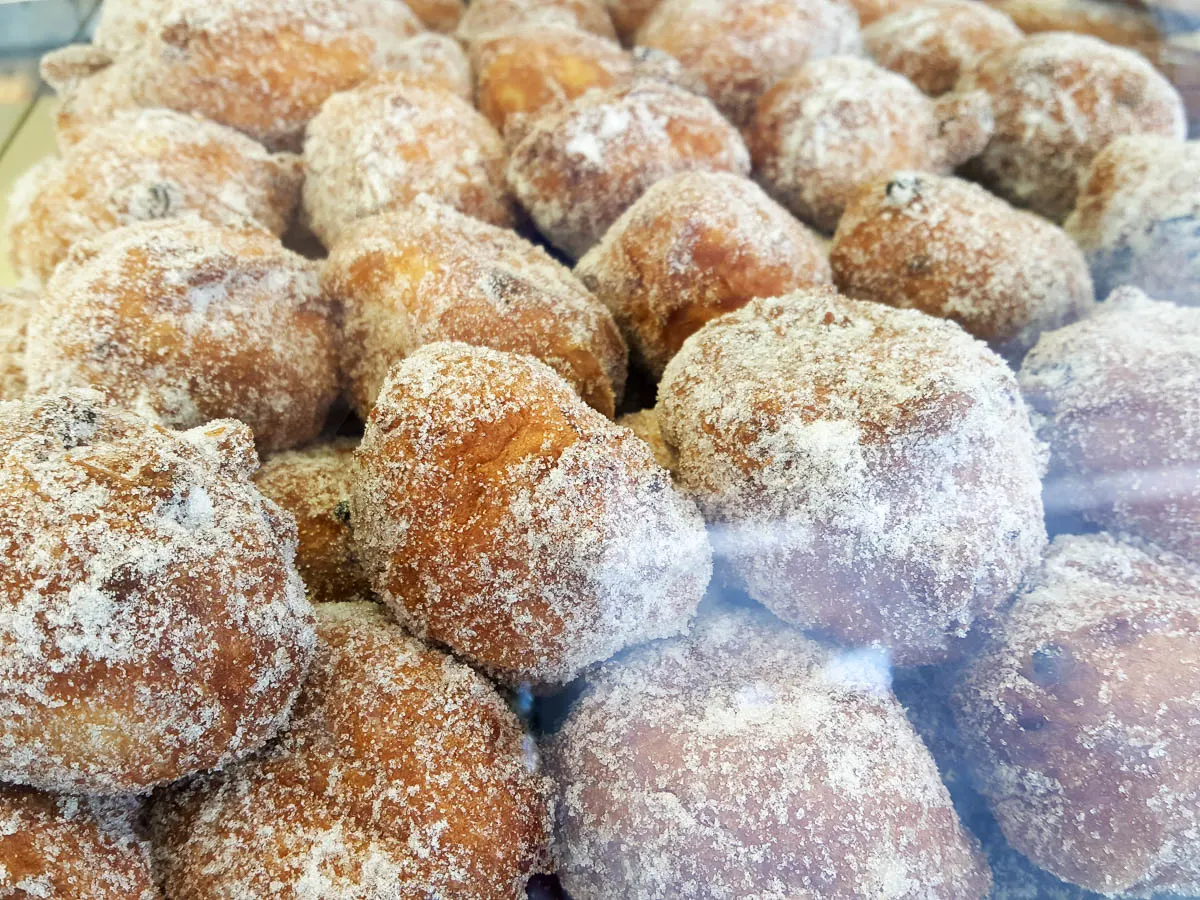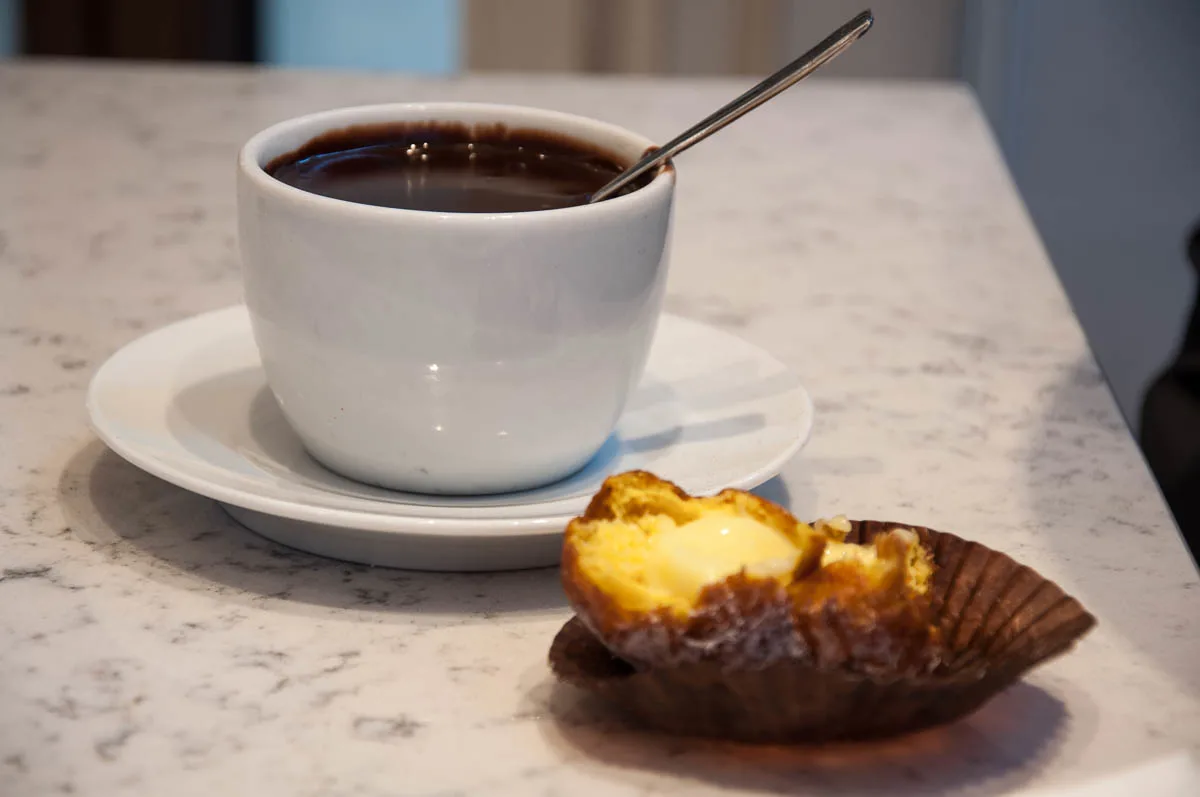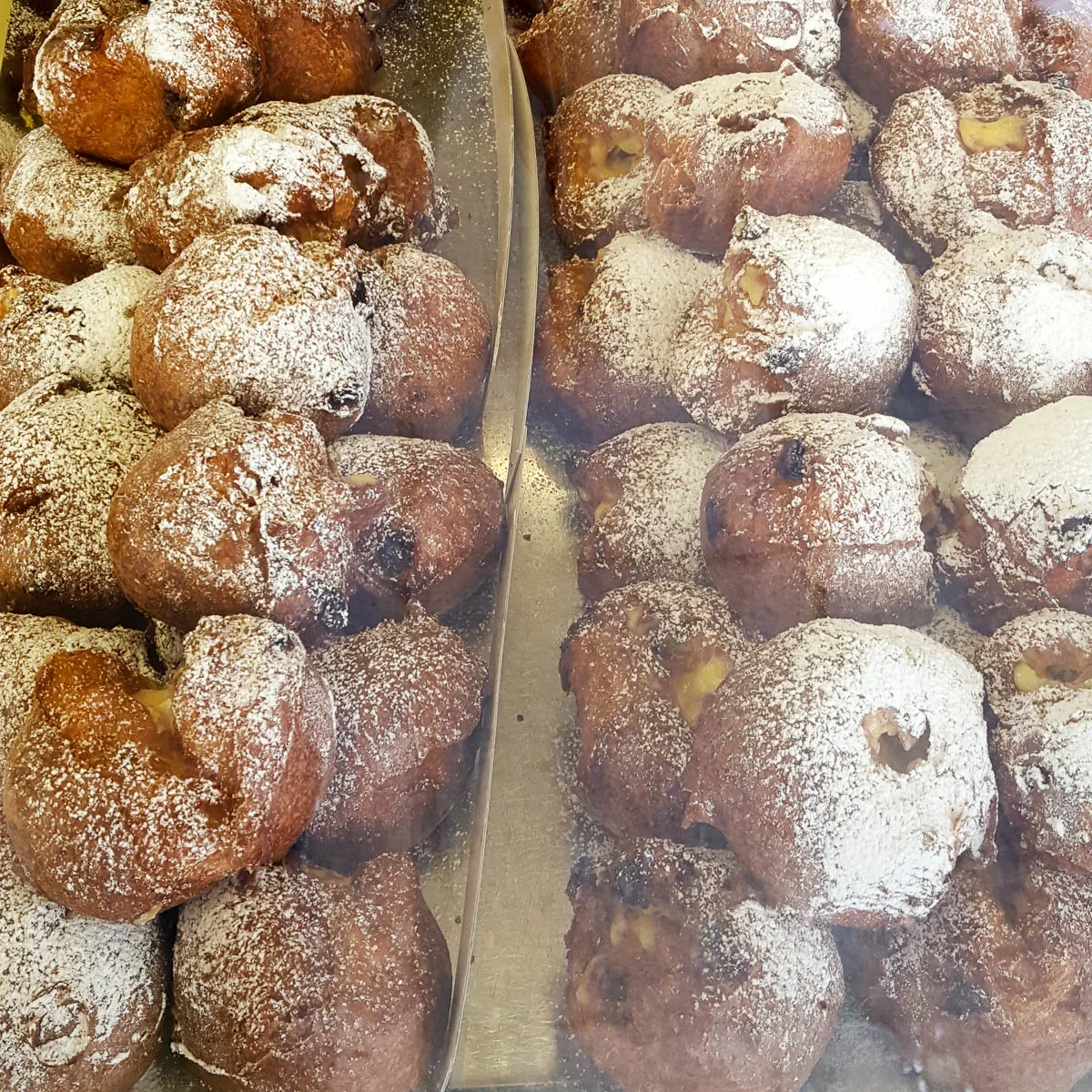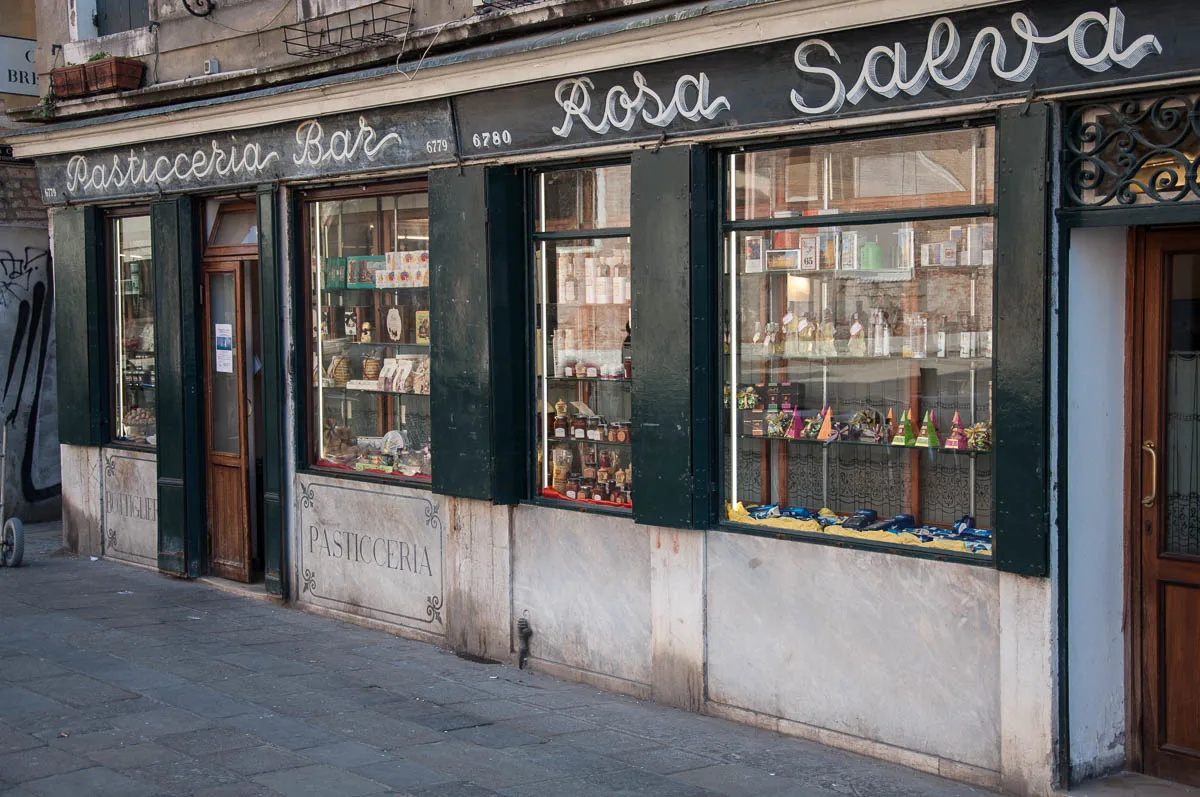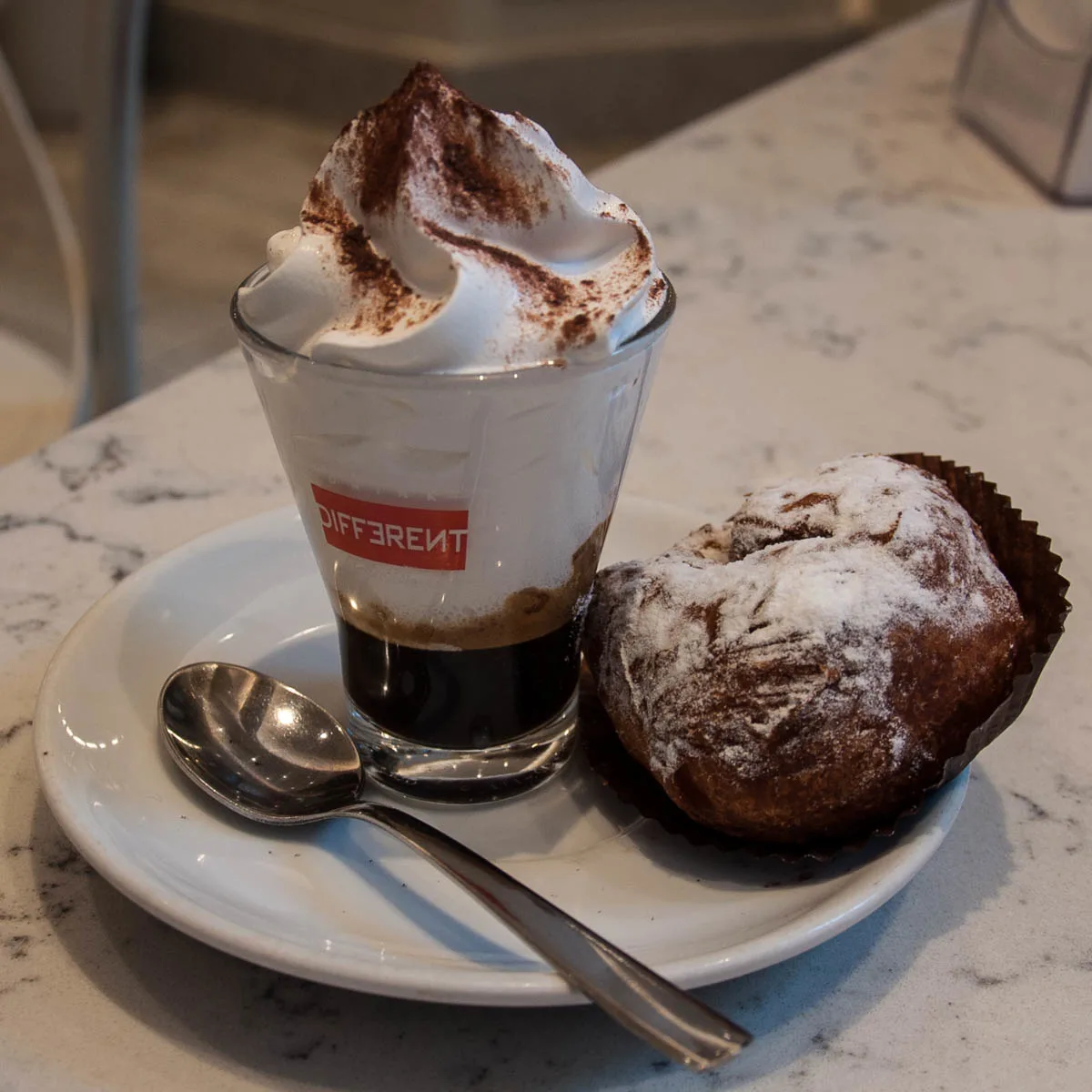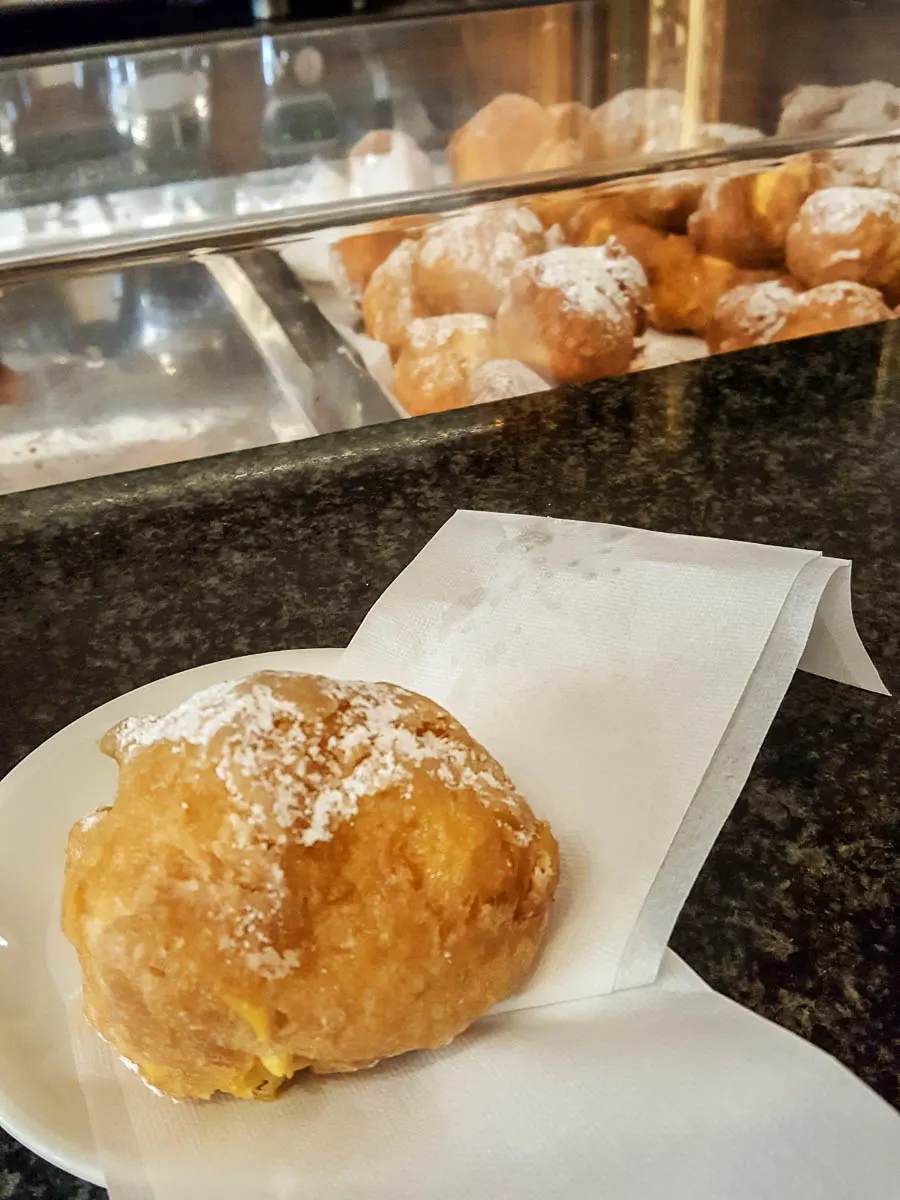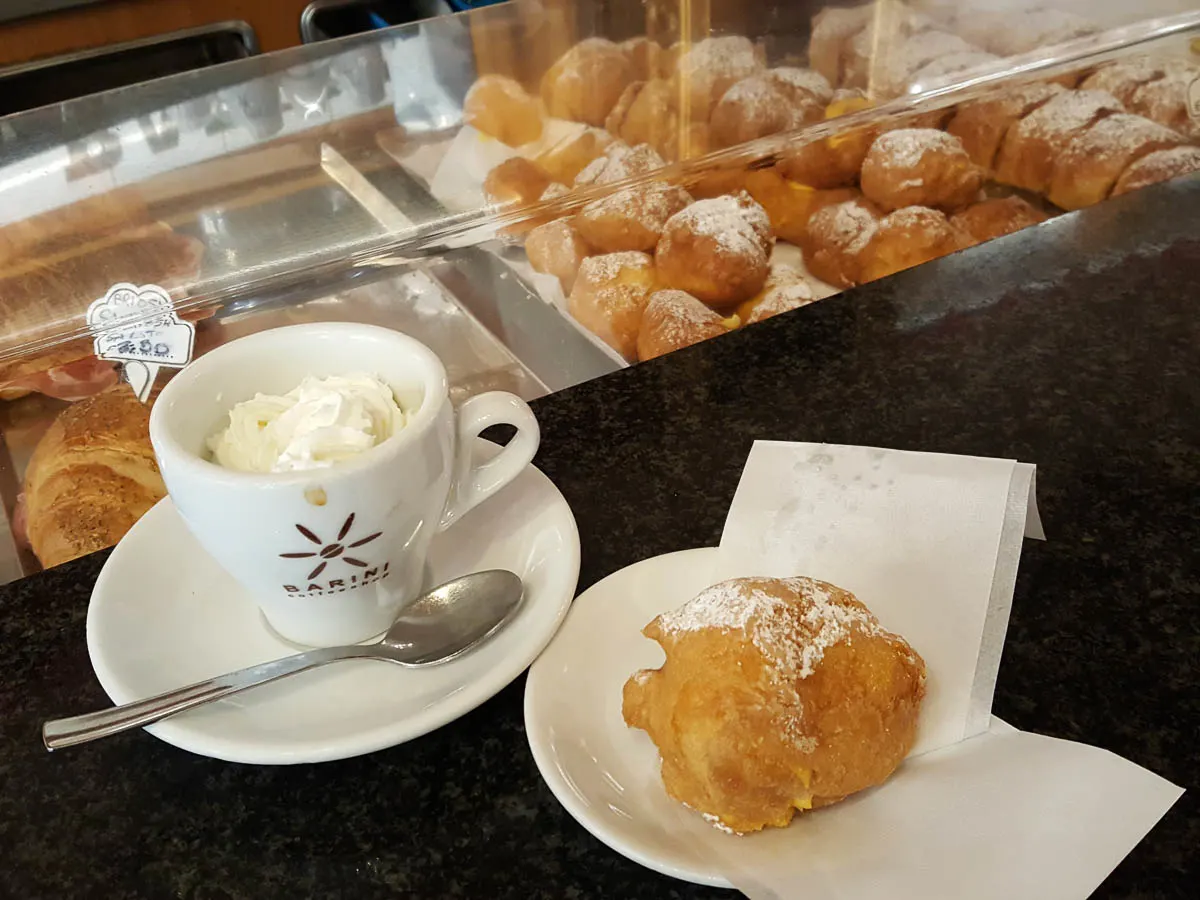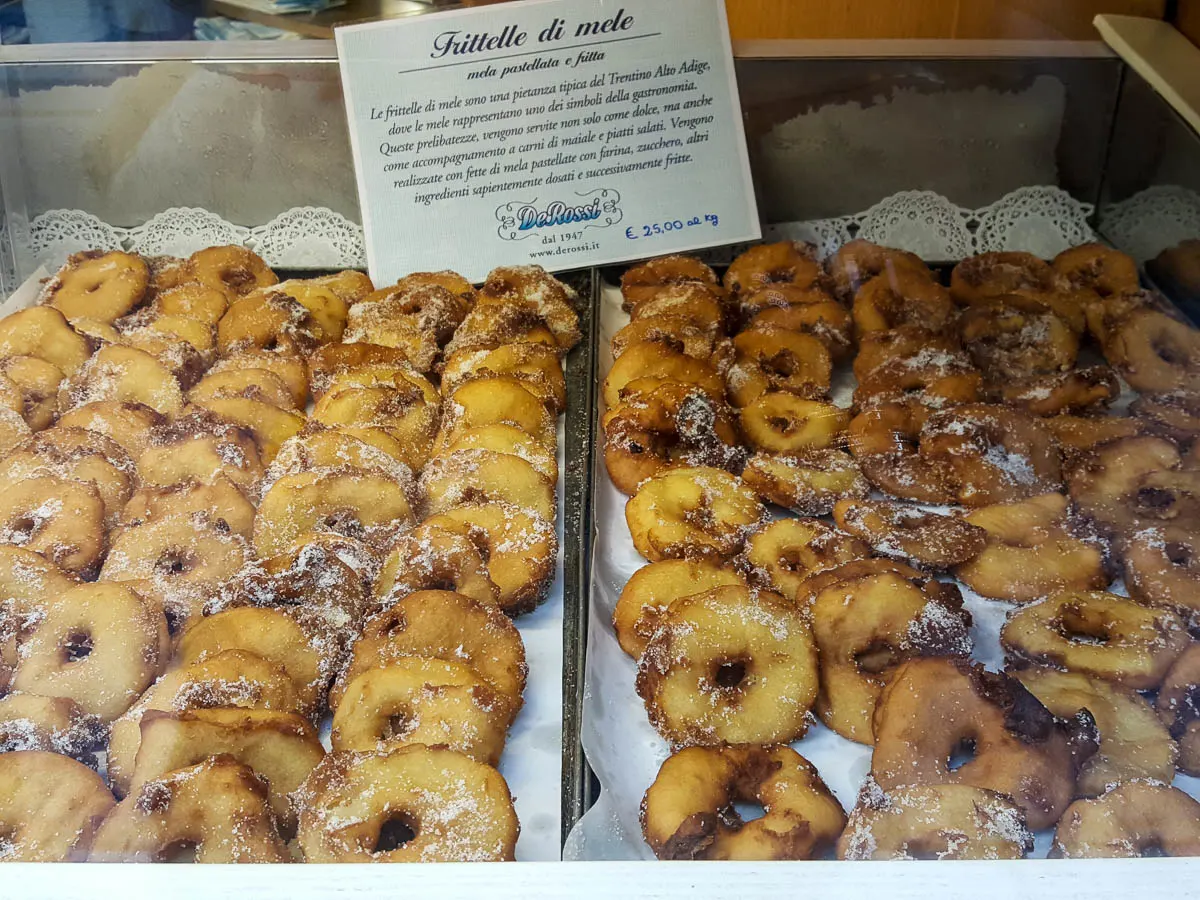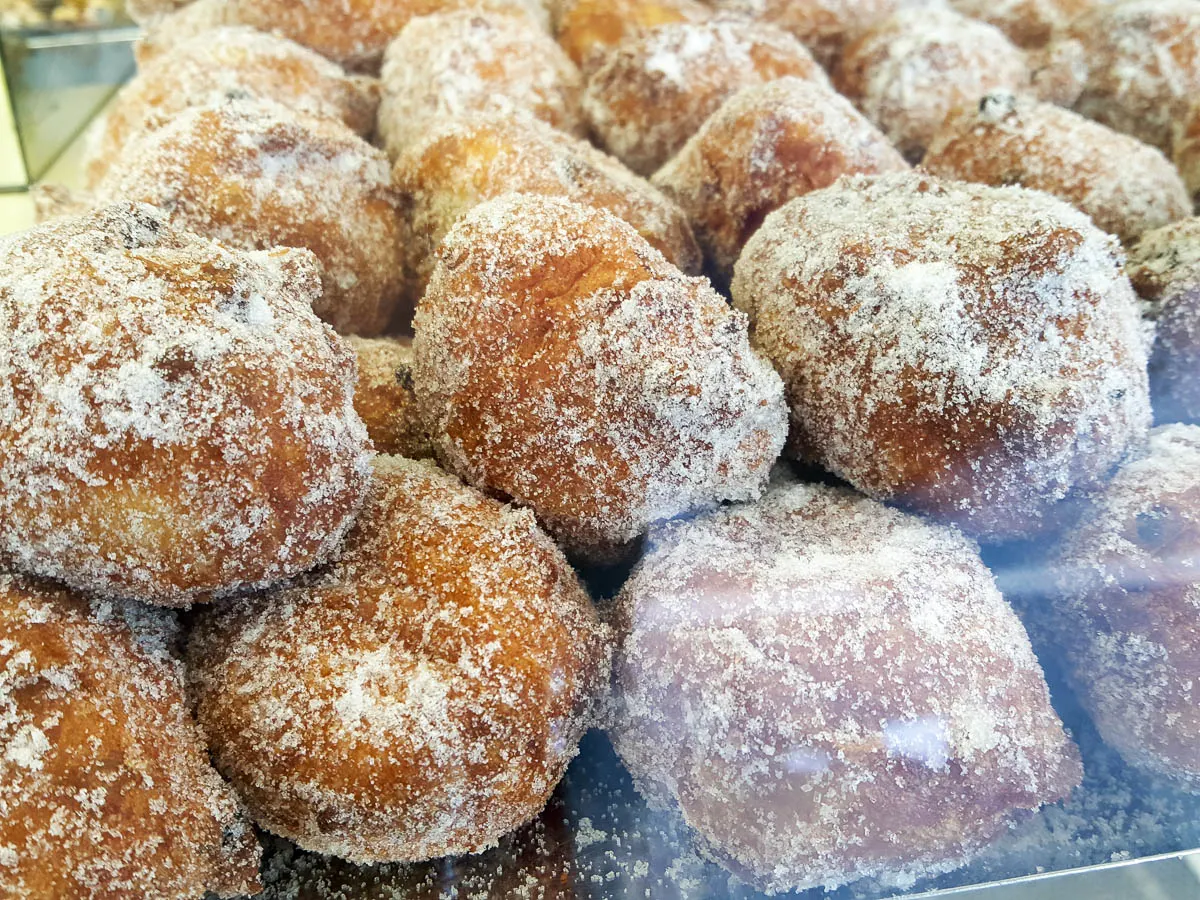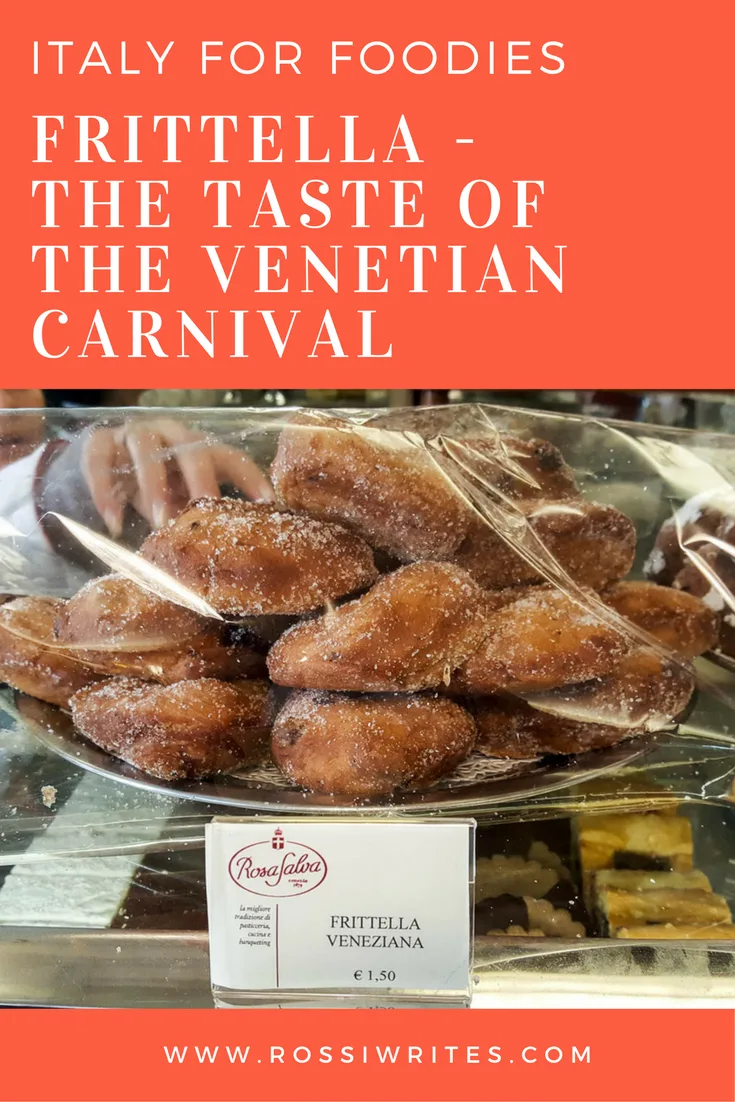Today I am saying good-bye for another year to a dear friend – the Venetian frittella.
It has a beautiful name, an irresistibly puffed-up appearance, but what seals the deal for me is its taste. A perfectly fried chewy dough complemented by a filling of thick creme patisserie, lavish chocolate spread or sinful zabaione. Or, traditionally, simply studded with some juicy raisins and crunchy pine nuts.
The ingenuous combination of fat and sweet fires just the right pleasure centres in my brain. Eating a frittella is, like, pure bliss!
Availability of Frittelle
The thing is, you see, that the frittella (or frittelle in plural) will make one final appearance in the Italian bakeries and sweetshops today and then it will not be seen until the next edition of the Venetian Carnevale. For it is the sweet traditionally linked with the Carnival season here – this marvelous time of the year when people dress up, mask up and eat frittelle to their hearts’ content.
Or, at least, this is what happens in Veneto – the Northern Italian region where I am lucky enough to currently live.
‘Why don’t you do frittelle all year round?’, I asked once the owner of a cute coffee shop in Treviso on the last day of the Carnival in 2015.
‘Oh, they need to be eaten fresh, as they are difficult to store, and, anyway, it is a tradition to only eat them during Carnevale’, he explained whilst serving us some of the largest frittelle I have ever had the pleasure to sample. I bit into mine, chewing slowly and savouring every bite.
Frittelle and I
I still remember the first time I came across the frittelle. It was February in 2011. I was spending solo five days in Venice. It had been a dream of mine for many years to experience the city on water during its Carnival season and I had bought my plane tickets and booked my hotel six months in advance, thus being able to get some really cheap fares.
On one of those days I found myself in a small bar on Murano – the island famous for its glassmaking traditions. I had had a quick lunch and wanted to round it off with a traditional dessert. I tried ordering a tiramisu, but the kind lady behind the counter couldn’t decipher my accented order, so she pointed to a large tray with puffed brown things and said: ‘Why don’t you pick a frittella instead?’
And that was it! Me and frittella – love at first taste. An enduring love story. A craving I try to appease during each day of the Carnival season.
My favourite variety is definitely the one stuffed with creme patisserie, but I don’t turn my nose at any of the other options. So far, the best frittelle I have had this year are the ones served at Pasticceria Secco in Vicenza (see the penultimate entry in this list), the ones at Pasticceria Bar Rosa Salva in Venice…
and the ones in Padua’s Antico Forno cafe.
I am not a frittella snob though. I wouldn’t travel for miles just to experience an incredibly good frittella. In my book they all taste good and are all worthy of my attention. Especially if they are still warm, just dusted with icing sugar and their doughy sides are still light and crispy, just waiting for you to bite in and taste the overload of creme patisserie or other such tasty filling.
History of the Fritelle
So, how come the humble fried frittella became such a big thing in the refined Venice and the region of Veneto?!
Frittelle, in Venice sometimes also called frittolle, have been known since Roman times and their name in Latin was frictilia. Nowadays they are, actually, known and eaten all over Italy and in many countries around the world under different names, like ‘fritters’ in England and ‘buñuelos’ in Spain. They achieved their utmost glory in Venice, though, where they were declared to be the sweets of the Serenissima Republic.
The interesting thing here is that for centuries the frittelle in Venice could only be made by special tradesmen called fritoleri. Between the 17th and the 19th centuries they even had their own association guaranteeing each fritolero the production of frittelle in a certain area of the city and also giving him the right to pass the craft of frittelle-making and -trading to his children.
The recipe these original fritoleri used had more or less the same ingredients as today – flour, butter, eggs, sugar, yeast, pine nuts and raisins. The fritoleri would fry the frittelle in pans with oil, lard or butter and offer them to the passers-by threaded on small skewers.
In fact, the oldest document related to the Venetian cuisine is a recipe for frittelle dating back to the year 1300! Nowadays it is preserved in the Casanata Library in Rome.
Frittelle and Fritoleri in Art
There is a very interesting painting by Pietro Longhi (which you can see in the museum Ca Rezzonico along with ‘Clara the Rhinoceros’ – another painting by the same artist which I told you about here). It is called ‘The Frittelle Seller’ and it depicts a lady fritolera sticking frittelle onto a skewer for a noble client and two young noble ladies whilst a small boy holds a big bowl filled to the brim with the freshly fried sweets. The painting is from 1750 and attests to the popularity and the wide availability of the frittelle.
Another work of art from 1784 and called ‘Insegna dell’Arte dei Fritoleri‘ is nowadays held at the Correr Museum in Venice. It is painted with oil on wood by an anonymous artist and it shows a lady fritolera in the full swing of her craft making and frying frittelle. As a curious tidbit, let me tell you that at that time the fritoleri could sell freely their freshly made stock all around town, but they were not allowed to shout out in order to attract potential clients.
Nowadays, frittelle are available in all sweetshops, bakeries, patisseries and even supermarkets in Veneto and further beyond from New Year’s Day until the last day of the Carnival season.
Varieties of Frittelle
The traditional variety of frittelle of Venice doesn’t have a filling and instead it is simply studded with raisins and pine nuts, but side by side with it you will easily find all sorts of frittelle, generously stuffed with creme patisserie (called crema in Italian), the alcohol-based zabaione and even Nutella.
You may also come across frittelle made with apples. Don’t miss your chance to try them. If they are small in size, then tiny pieces of chopped apple have been mixed with the dough, giving the fried frittella an added sense of softness. If they are large in size, then a horizontally cut slice of apple has been dipped into the batter and fried, so you end up with something slightly resembling a donut with a hole in the middle.
I had a chance to sample the small variety of apple frittelle in the village of Bagolino (which is in Lombardy and not Veneto) and their large variety at a lovely bakery-cum-patisserie called De Rossi in Verona, where a note in their window display clarified that the apple frittelle were typical for the regions of Trentino and South Tyrol (in Italian known as Alto Adige) to the North of Veneto.
By the way, speaking of different varieties of frittelle, let me tell you a story. Last year I asked the boy at the counter of a Venetian patisserie to pack four large frittelle with crema for me to take home. He was rather offended and insisted that there they only made the variety which is traditional for Venice.
‘Do you know that frittelle should only be made with raisins and pine nuts?!’, he asked me.
I did, but my favourite variety is with crema.
I wasn’t surprised to see that this year the window display of that same patisserie had large trays with frittelle with any possible (albeit modern) filling.
The Price of a Frittella
You will be asked to pay anything between 1.50 and 1.80 euros for a single large frittella. Once I was charged 2.50 euros for one in a bar in Verona which was simply outrageous.
A kilo of the smaller size frittelle will set you back anything from 14-15 euros (supermarket prices) to 32 euros (as charged by my local cafe). My local cafe makes sublime frittelle though and a single small one (even at 32 euros per kilo) only costs about 50 eurocents, so having one or two with proper Italian coffee has been my guilty secret for the past few mornings.
Well, seeing that it is the last day of Carnival today, I have less than 24 hours left to indulge in a frittella or more. Needless to say, I am already looking forward to their return next year.
Have you tried frittelle? What did you think? Tell me, which one is your favourite sweet and is it easy to find it all year round where you live?
If you liked what you read, please, leave me a comment or use the buttons below to share it on social media.
For more stories like this you can follow me on Facebook and subscribe to my weekly strictly no-spam newsletter. Thank you!

